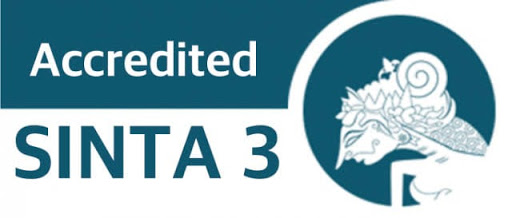AN ANALYSIS OF SPEAKING ANXIETY EXPERIENCED BY THE THIRD-YEAR STUDENTS AT SMPN 2 BAYAT OF ANAMBAS ISLAND
Abstract
This article focuses on the study that aims to find out the levels and the major causes of speaking anxiety experienced by the third-year students at SMPN 2 Bayat of Anambas Island. Total sampling was used in this research since the pool of participants was relatively small consisting of 13 students overall. In collecting the data, students were asked to fill out a set based on a modified version of the Foreign Language Classroom Anxiety Scale (FLCAS) questionnaire developed by Horwitz et al (1986). After analyzing the data, it was found that most students experienced speaking anxiety on a moderate level. The results suggested that 4 students with a percentage of 30.77% were classified as a high level, 9 students with a percentage of 69.23% were classified as a moderate level and none of the students or 0% was classified to have a low level of anxiety. Additionally, “lack of preparation”, “afraid of being laughed at” and “afraid of being called in English classes” were the major causes of speaking anxiety that most participants agreed with. Thus, some suggestions were provided with the expectation of reducing students’ anxiety while speaking English.
Keywords
Full Text:
PDF (ENGLISH)References
Daud, A., Ras, F., Novitri, N., & Audia, C. P. (2019). Factors contributing to speaking anxiety: a case study of pre-service English teachers. Journal of Educational Sciences, 3(3), 412-422.
Desfitranita, D. (2017). Students’ Rules and Practices: How to Speak English Fluently? Al-Ta Lim Journal, 24(1), 19-28.
Horwitz, E. K., Horwitz, M. B., & Cope, J. (1986). Foreign language classroom anxiety. The Modern language journal, 70(2), 125-132.
Marwan, A. (2008). The exploration of factors triggering foreign language anxiety: learners'voice. Teflin Journal, 19(2), 119-126.
Öztürk, G., & Gürbüz, N. (2014). Speaking anxiety among Turkish EFL learners: The case at a state university. Journal of language and Linguistic Studies, 10(1), 1-17.
DOI: http://dx.doi.org/10.33578/pjr.v6i3.8752
Refbacks
Copyright (c) 2022 JURNAL PAJAR (Pendidikan dan Pengajaran)

This work is licensed under a Creative Commons Attribution-NonCommercial-ShareAlike 4.0 International License.
JURNAL PAJAR (Pendidikan dan Pengajaran)
Secretariat
Program Studi Pendidikan Guru Sekolah Dasar
Gedung B1, FKIP Universitas Riau
Kampus Bina Widya Km. 12,5 Simpang Baru Panam
Pekanbaru Riau Indonesia 28293
e-mail : pajar@ejournal.unri.ac.id



